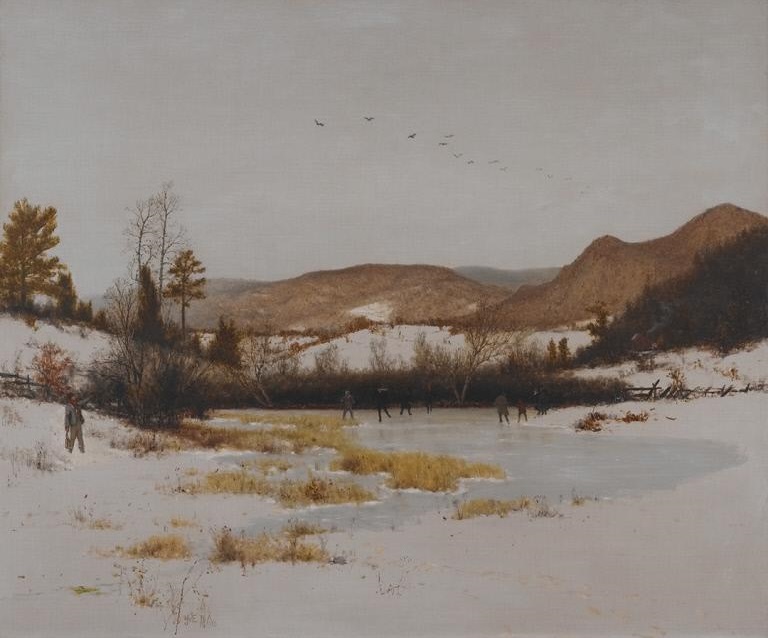![IMG_3884[1]](https://images.crystalbridges.org/uploads/2015/11/IMG_38841-300x224.jpg) It’s snowing at Crystal Bridges today: tiny flakes that are cascading off the arch of the roof in white streamers with the wind. It’s a beautiful, if slightly forlorn display.
It’s snowing at Crystal Bridges today: tiny flakes that are cascading off the arch of the roof in white streamers with the wind. It’s a beautiful, if slightly forlorn display.
Winter scenes are less popular among landscape artists than the greens of summer or the colorful foliage of autumn. However, one artist in the Museum’s collection made barren winter scenes his specialty.
Jervis McEntee was born in Rondout, New York, in 1828. He studied with Hudson River School artist Frederic Edwin Church, and was dear friends with the painter Worthington Whittredge, but he himself was not as well-known as his colleagues, as he was something of a second generation Hudson River School artist, and the style became less popular midway through his career. He had a particular niche, however, which made him stand out. He specialized in capturing the landscape in its dormant state, with cloudy skies and muted colors. Winter in the Country, from Crystal Bridges’ collection, is a great example of McEntee’s winter paintings. It was painted in 1889-90, just a year before McEntee’s death, and it’s clear that he’s got his style down pat. Every stroke counts, and nothing is overwrought.
In his journals, McEntee wrote: “Some people call my landscapes gloomy and disagreeable…. They say I paint the sorrowful side of nature …But this is a mistake…Nature is not sad to me but quiet, pensive, restful.”
McEntee kept daily journals of his life from 1872 to 1890. These have since become a valuable record of what it was like to be an artist in the late nineteenth century. (The journals are now in the Archives of American Art at the Smithsonian Institution. You can read parts of it on their website.) In his journal, McEntee recorded his work on Winter in the Country, which he began in December 1889 and seems to have pretty much completed by New Year’s Eve. On December 27 he wrote: “I began a winter picture today on a canvas 30×36 and painted in the objects leaving the Canvas to represent the snow which seems the exact tint. I am much interested and hope to make a good picture.”
He refers to the painting again the next day, referring to a visit by Worthington Whittredge who “seemed interested in my picture” and a later visit from another artist: “Frederick Remington called this afternoon and spent some time with me,” he wrote. “He seems to me a man who has decided ideas. He has been up in Canada moose hunting and was interested in my snow picture.”
On December 31 McEntee wrote: “Stopped in at a photograph place and bought one of some skaters in the Park from which to get suggestions for figures in my winter picture, and after I came to my studio painted in a number of figures.” Readily available and reproducible photography must have still seemed rather novel to McEntee, as Eastman’s Kodak camera had come out only a year earlier, in 1888.





![IMG_3887[1]](https://images.crystalbridges.org/uploads/2015/11/IMG_38871-300x224.jpg)

